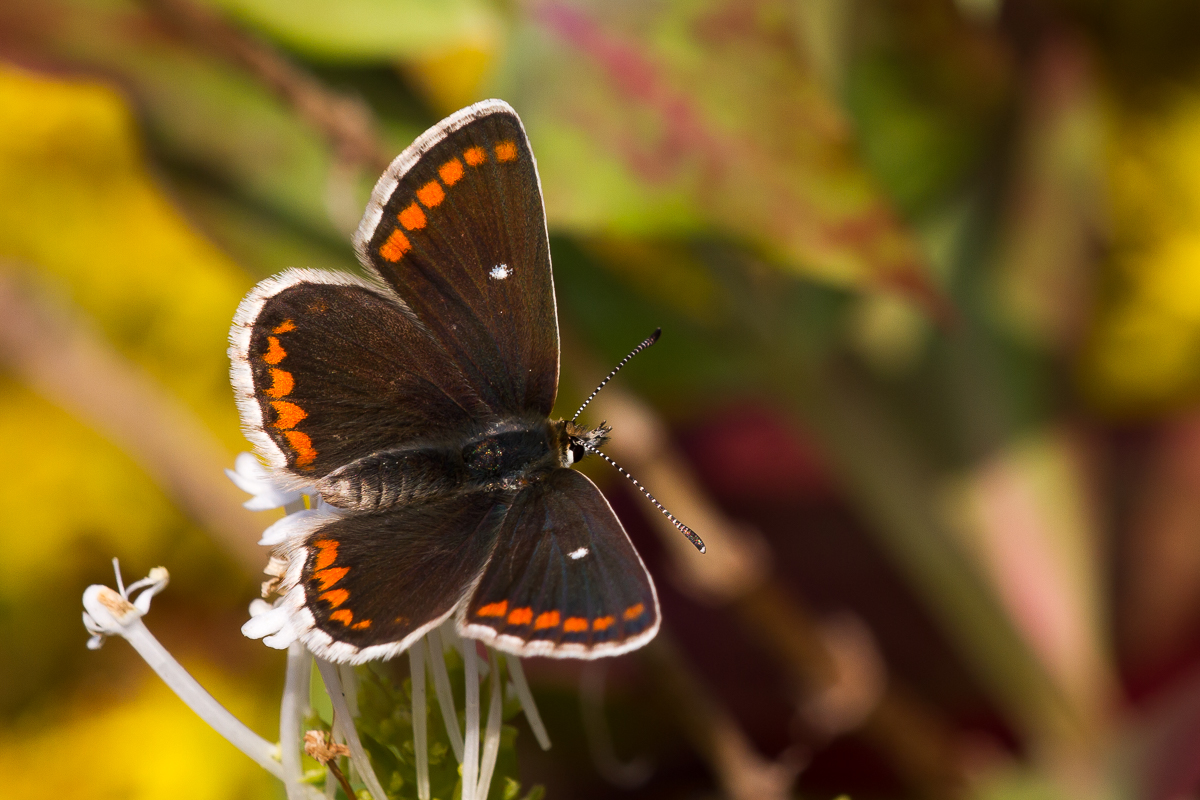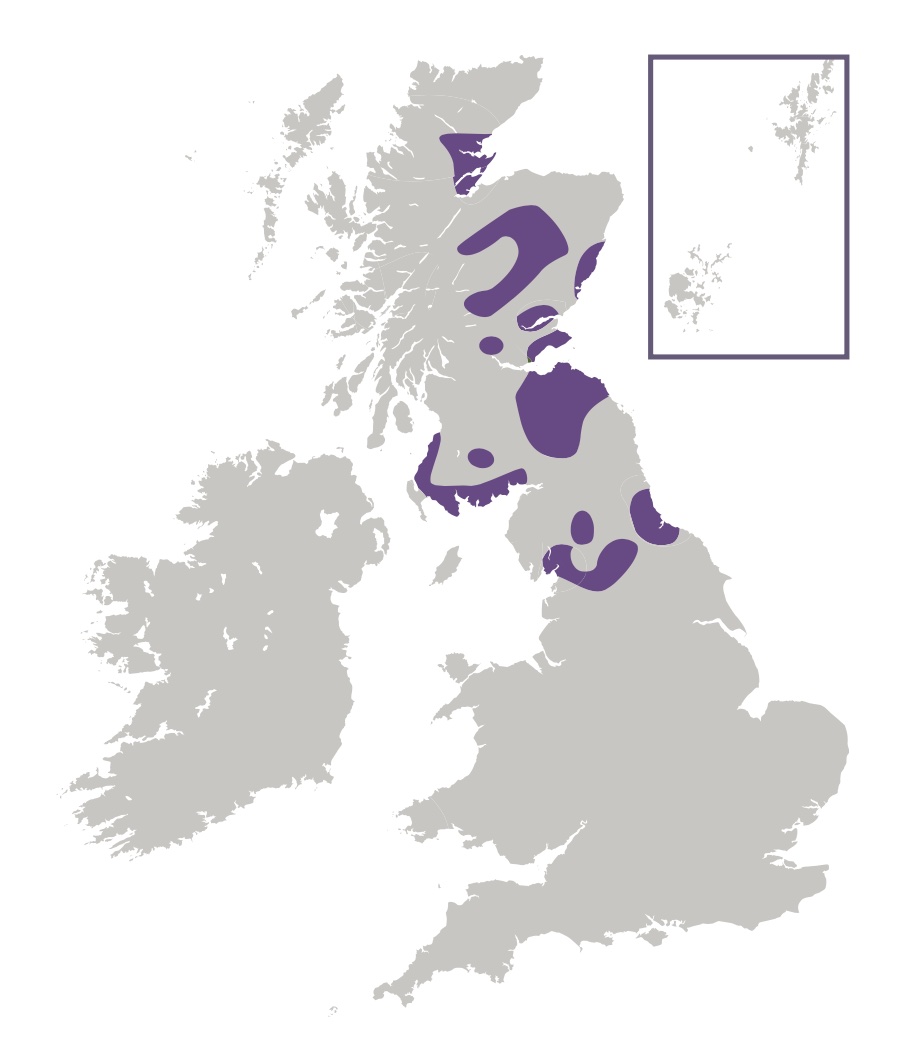
Photo © Peter Eeles
For many years, the Northern Brown Argus was considered to be a subspecies of the Brown Argus. However, it is now believed that this is a distinct species in its own right and has a different flight time and different number of broods - this species being single-brooded. Although very similar in appearance to a Brown Argus, the two can be separated by location in the British Isles, since the Northern Brown Argus is found only in the north of England and Scotland. This species exists as 2 distinct subspecies that are endemic to the British Isles, the result of being separated from its continental cousins for thousands of generations. The artaxerxes subspecies is found in Scotland and the Salmacis subspecies in northern England. Small populations may occur in Clwyd, North Wales, although these may turn out to be colonies of Brown Argus. This butterfly is not found on the Isle of Man. Most colonies are small, containing less than 50 adults.
This is a warmth-loving species, with both male and female flying in warm sunshine. Both sexes roost head-down on a grass stem and, like the Brown Argus and Common Blue, roost communally.

This species is found on sheltered south-facing slopes, or in hollows. Alkaline ground, such as limestone, is preferred since this favours the growth of the larval foodplant, Common Rock-rose. This butterfly can be found on limestone grassland, coastal valleys and quarries, limestone pavement and outcrops.
Adults feed primarily on Bell Heather (Erica cinerea), brambles (Rubus spp.), Common Bird's-foot-trefoil (Lotus corniculatus), Kidney Vetch (Anthyllis vulneraria), knapweeds (Centaurea spp.), ragworts (Jacobaea spp.), Red Clover (Trifolium pratense), Red Valerian (Centranthus ruber), Small Scabious (Scabiosa columbaria), thistles (Carduus spp. and Cirsium spp.) and Wild Thyme (Thymus drucei).
The primary larval foodplant is Common Rock-rose (Helianthemum nummularium).
